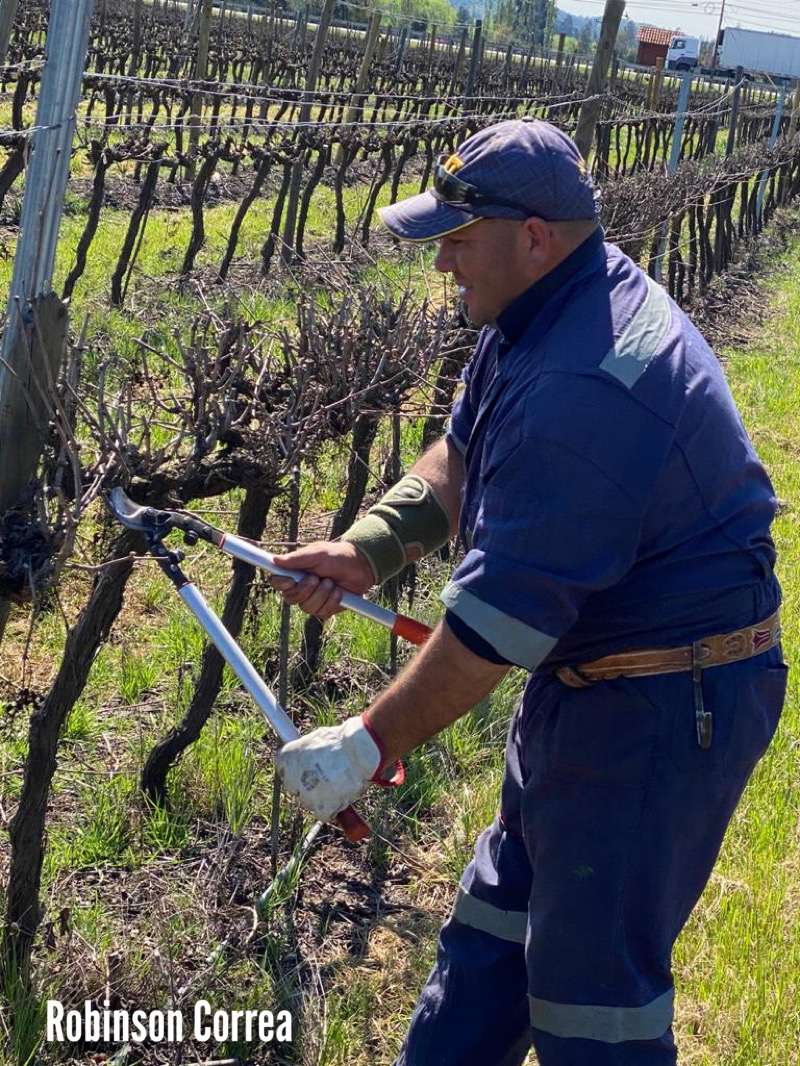
31 Ago Pruning
The first thing that ought to be said regarding pruning is that it is an unnatural practice. It is, however, one of the most important activities carried out by the vine-grower, whose function it to lead and determine the grapes’ quantity and quality. It is additionally closely linked to the vine’s training system, which determines the vineyard’s architecture.
Among other things, pruning gives us the opportunity to shape the vine in a particular way and keep it stable over time. Also to obtain a relatively constant grape production, thus avoiding the natural alternate bearing. It also allows defining whether to obtain a quality production or to sacrifice it for a higher volume. It additionally helps to create a balance between the aerial parts and the roots and to organize the vegetation to make pruning and thinning, as well as tilling the soils easier.
Pruning can be summarized as the action of cutting previous year’s shoots, or even parts of the older vines, with the aim of leaving only the necessary buds to obtain a specific number of bunches per plant. In this regard, the number of bunches depends on pruning, but also on the variety of the vines. Some are more fruitful than others, yielding, for example, up to three bunches per sprout, while others produce only one. Some vines are more fertile in the shoot’s first buds, thus requiring a longer pruning. In other words, canes need to be left with more than five buds. Others, on the other hand, allow spur pruning, also known as short pruning. These vary from one to three buds since they are fertile from the moment the first bud sprouts.
Pruning has also a sanitary effect, especially when the vines are left with the season’s shoots (for example, with Guyot), since they don’t have ritidoma (a bark, characteristic of vines, that can be detached in longitudinal strips), where insects hide. Furthermore, since these pruning cuts are rather small and are renewed year after year, they are less likely to accumulate wood fungus in the internal vascular bundles (mal dell’esca, chlorotic winding). On the contrary: this benefits spur pruning, for example, since it is based on an arm that is held year after year, and as of which new shoots develop.
Another indirect aspect is that spur pruning tends to produce smaller bunches as opposed to, let’s say, Guyot pruning, which can deliver higher yields per plant. This, however, is more determined by the grape varieties, which, in their own right, produce smaller bunches (like Pinot Noir and Chardonnay) or bigger ones (like Sangiovese and Syrah), or, as we said before, more or less bunches per sprout.
Lastly, and schematically exposed, we can arbitrarily say that the vines experience four stages during their lives:
1.- Young plants, up to three years. During this period, pruning is fundamentally oriented to favoring the root growth and the accumulation of reserves, but not to producing grapes.
2.- Plants of growing production, between three and seven years, approximately. This is the period during which the plant gradually reaches it maturity and optimal yields. During this stage, pruning is fundamental to achieve that goal, so it is rather intense.
3.- Adult plants, from 7 to 20-25 years. During this period the vine’s production is quite constant, with some annual variations. Therefore, pruning is very important to keep vegetation and production in balance.
4.- Old plants, from 30 years on. This is the period in which vigor and production face a slow decline, and therefore, pruning need to be progressively increased.
Ricardo Baettig
Winemaker at Viña Morandé





